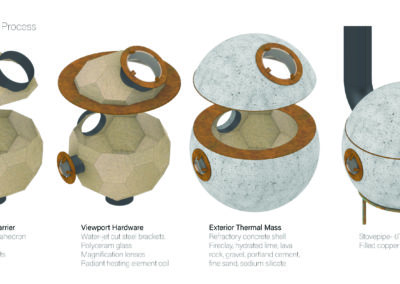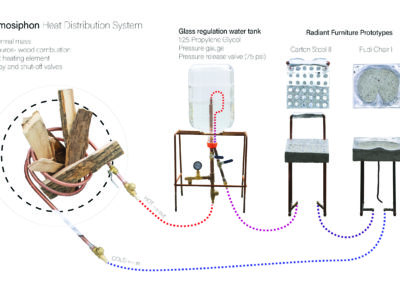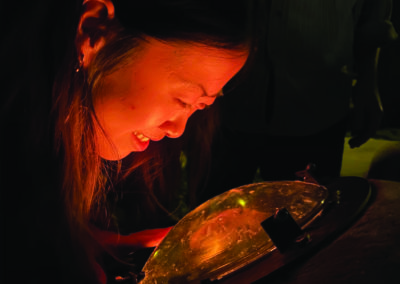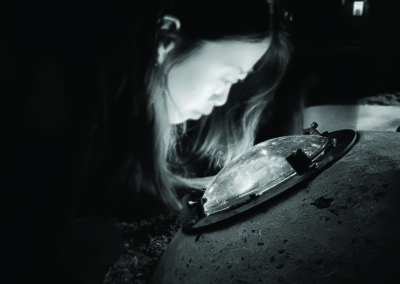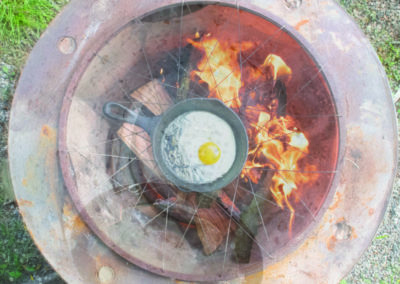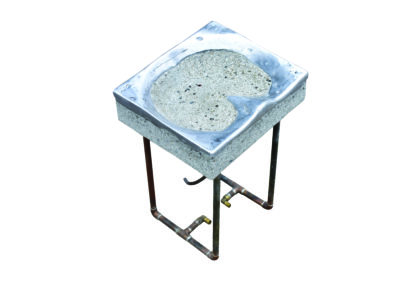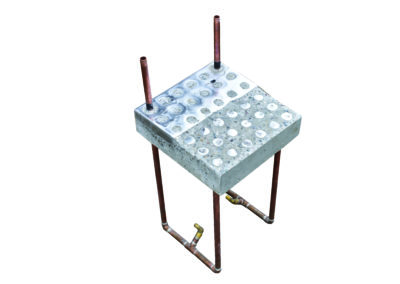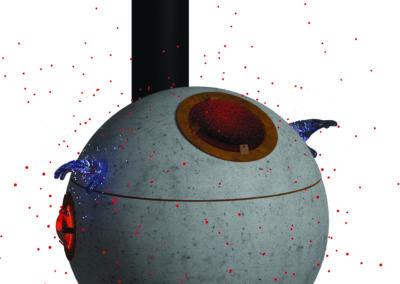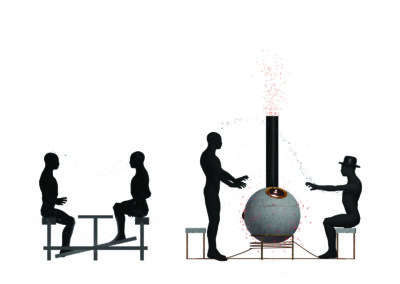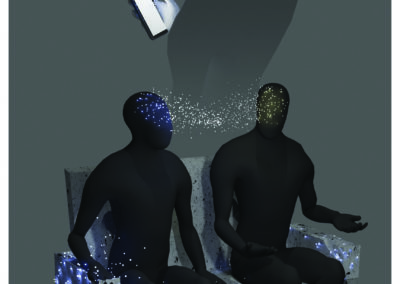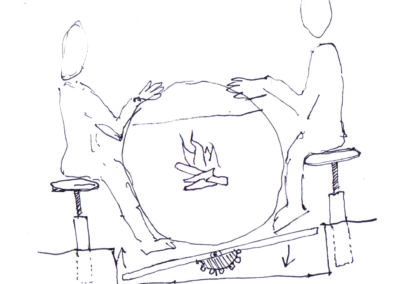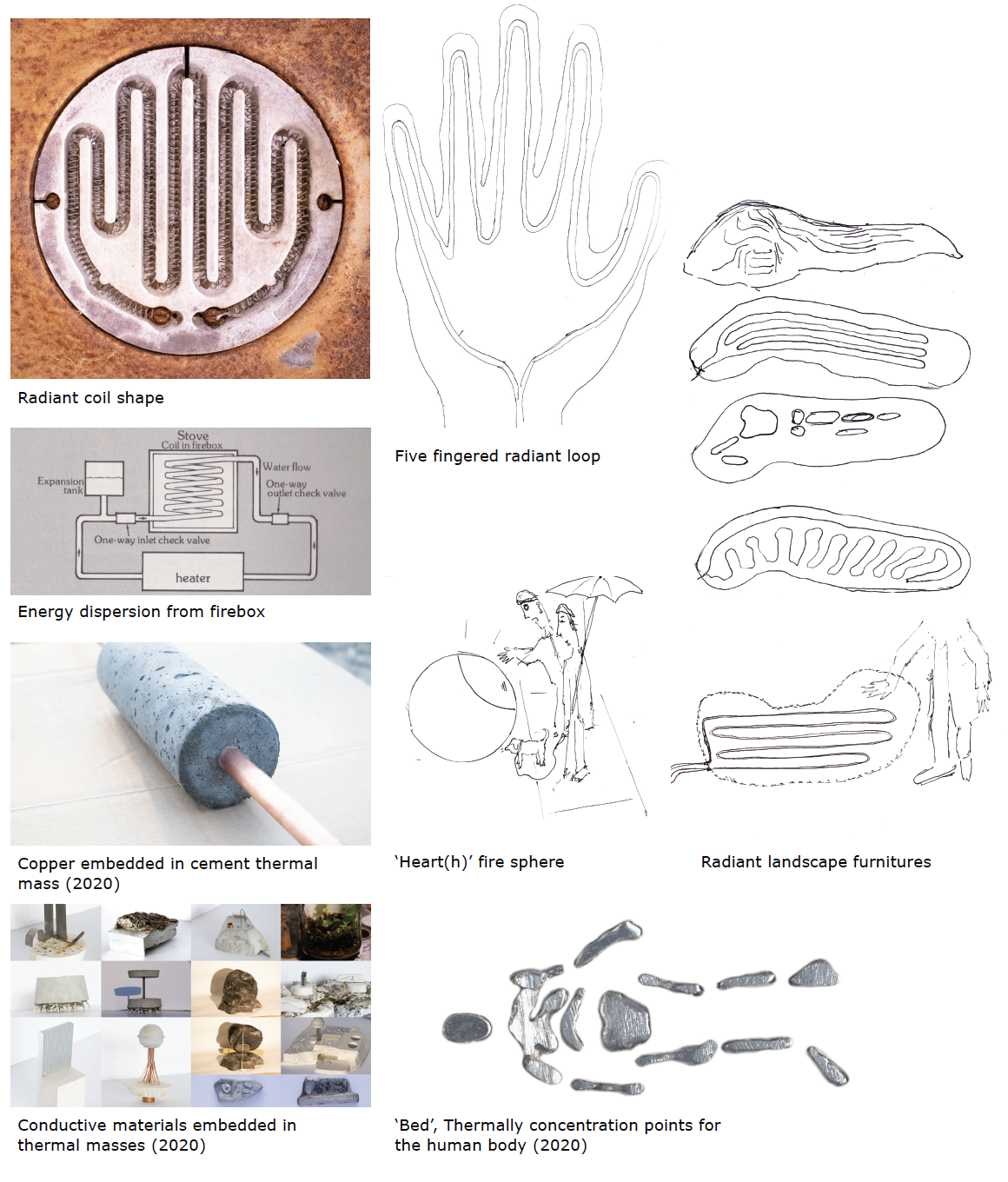
Neos
Waylon Richmond, A. Alfred Taubman College of Architecture + Urban Planning
This thesis proposes a set of ‘smart’ analog interventions that address the rapidly evolving ‘smart city’. The project engages in the fields of architecture, design, art, information technology, behavior science, and mechanical engineering. The apparatuses will be prototyped on a neighborhood scale, sited adjacent to public sidewalks for anonymous accessibility. Over the next three months, prototype iterations will be staged at various locations in Ann Arbor. Observations will take place in person as well as through a QR-code accessed online feedback system by anonymous participants. Are we free to choose what we put our energy into? Are we aware if and when our energy is being manipulated? How do we flex power over unseen energy harvesters?
To focus on one thing for an extended period of time takes tremendous will power, and it is getting harder. While concentration has always been a feat of mastery, our modern age presents a new wave of obstacles that are sly and unchecked. They reward their captive audience with shallow dopamine spurts that quickly crash and emotionally reverse, triggering addictive tendencies through digital tools such as the smartphone. Although an individual can never possibly know all of the worlds happenings at once, the internet, with its aptitude, markets that prospect. Along with that idea comes an enhanced, engineered social system that tugs emotional heartstrings with glee (and for profit). Toxic emotional conditions such as the ‘fear of missing out’ are reinforced within the modern social systems of etiquette and popular fashion, where collective behavior governs groups of people. This condition saturates the next generation, altering methods of growth and learning in an unpredictable nature. As these data forces steer the direction of culture and etiquette, a reciprocal force will be applied for equilibrium. In a rediscovery of reductions, this architectural project seeks to design counter-acting apparatuses to address these unchecked forces. These balancing forces mean not to extinguish integrated smartphone apps, but to raise opportunities towards the direction of presence, where learning and creativity thrive.
Architecture can influence behavior in space, but only if the individual resists the collective pressures and looks up. Designed apparatuses readily come in the form of physical objects with associated social cues. Rather than tapping into our vulnerable reactive intelligence, these designs seek to promote our reflective and deep intelligences, instilling curiosity through interaction, and elevating wisdom over efficiency. The design project aims to exploit pressure points of emotionally addictive design using participation, space, and belief systems. The interventions have the ability to grow into the fabric of the neighborhood, influencing social routines and fostering a neighborhood commons. The prototypes reference technologies used prior to the information age that offer intimate analog energy-transfer processes such as water, steam, and electric power. The weather resistant material pallet consists of cast/plastic forms of various types of reinforced concrete and mortar, polyethylene tubing, copper pipe, and cast aluminum.

